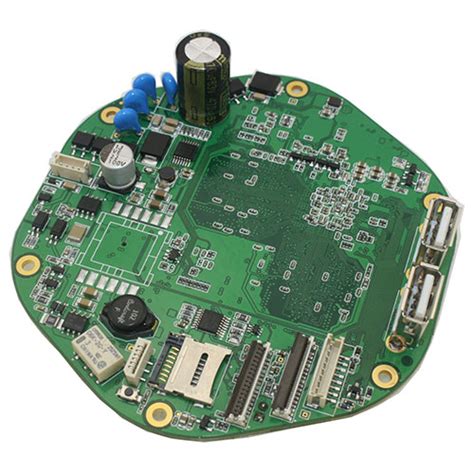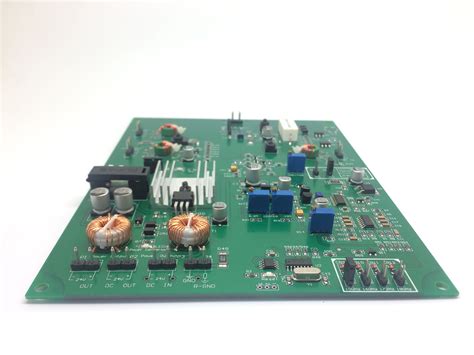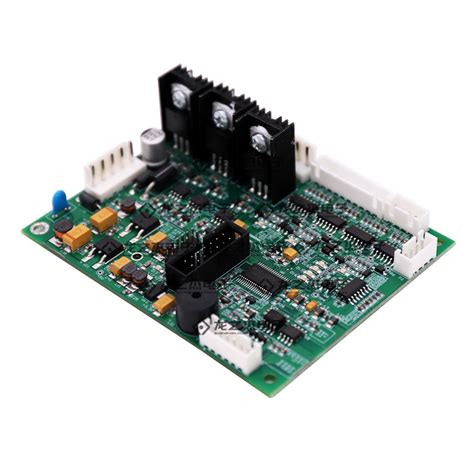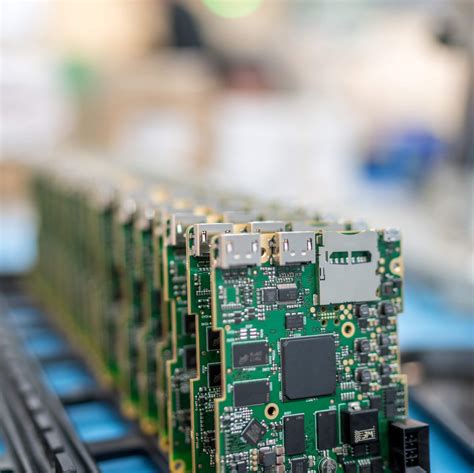Unlocking Innovation: The Future of Board PCBA Technology
Key Takeaways
The evolution of pcb assembly technology has catalyzed a significant transformation within the electronics sector, primarily through advancements in board PCBA. As industries increasingly prioritize efficiency and sustainability, the integration of modern manufacturing processes has redefined production metrics. Techniques such as automated assembly and precision soldering not only enhance the reliability of pcba, but they also minimize waste and improve scalability. Furthermore, innovative designs in board PCBA allow for more compact and multifunctional components, paving the way for smarter, more integrated devices. These enhancements influence various sectors, from consumer electronics to automotive applications, indicating a shift towards more interconnected and intelligent systems. To summarize, embracing cutting-edge board PCBA technology is essential for businesses aiming to remain competitive and responsive to market demands.
Introduction to Board PCBA Technology: A New Era of Innovation
The field of pcb assembly has entered a dynamic phase marked by significant advancements and innovations. Board PCBA (Printed Circuit Board Assembly) technology is at the forefront of this evolution, showcasing its ability to enhance electronic device performance and efficiency. With increasing demands for miniaturization and functionality, engineers are now tasked with developing solutions that not only meet these needs but also integrate seamlessly into diverse applications. The modern pcba process is no longer limited to basic assembly; it encompasses cutting-edge designs and advanced manufacturing practices that enhance the reliability and longevity of electronic products.
“Innovation in board PCBA technology is not just about improving processes; it’s about rethinking how we approach electronic design in every aspect,” says an industry expert.
This shift in perspective allows for the exploration of novel materials, improved connectivity options, and more sustainable practices within the pcb assembly landscape. As we delve deeper into this new era, it becomes evident that the result of such advancements is transformative, directly influencing industries ranging from consumer electronics to automotive manufacturing. With a focus on precision engineering and integration capabilities, board PCBA technology is setting new standards that promise to redefine expectations in electronics applications worldwide.

Cutting-Edge Designs in Board PCBA: Trends and Innovations
The landscape of pcb assembly is currently experiencing a remarkable transformation, marked by cutting-edge designs that emphasize efficiency, miniaturization, and enhanced performance. As industries increasingly demand smaller, faster, and more reliable electronic solutions, innovations in PCBA technology are pivotal. One of the most notable trends is the integration of advanced materials such as high-frequency laminates and flexible substrates that cater to diverse applications—from consumer electronics to telecommunications.
Moreover, the move toward modular designs allows manufacturers to create scalable PCBA solutions that can be tailored for specific applications while facilitating easier upgrades and repairs. Notably, automated processes are also reshaping the manufacturing landscape. With the advent of automated optical inspection (AOI) systems and machine learning algorithms, pcb assembly can achieve unprecedented levels of precision, reducing both defects and production time.
| Design Innovation | Description | Impact on PCBA |
|---|---|---|
| High-Frequency Laminates | Enable faster signal transmission | Improved performance |
| Flexible Substrates | Allow for innovative form factors | Increased flexibility |
| Modular Designs | Support tailored applications | Easier upgrades |
| Automated Inspection | Enhance production quality | Reduced defect rates |
This convergence of innovative designs in PCBA is not only streamlining manufacturing processes but also propelling advancements across various sectors such as automotive, healthcare, and smart devices. The continuous push towards enhanced functionality reflects a broader trend in electronics wherein adaptability and sustainability are critically interlinked, setting the foundation for a future where pcb assembly technologies will play a central role in driving industry-wide progress.
Manufacturing Process Evolution: Enhancements in Board PCBA Production
The landscape of pcb assembly has seen significant advancements, leading to notable enhancements in board PCBA production processes. A key element of this evolution is the incorporation of automated technologies, which have streamlined manufacturing workflows and improved overall efficiency. Automation not only reduces the time spent on assembling electronic components but also minimizes human error, thereby enhancing the quality of the final products. Additionally, innovative techniques such as surface mount technology (SMT) have become integral in producing compact and efficient circuit boards. These methods facilitate a higher density of components on small board sizes, allowing for more powerful electronic solutions within limited space.
Furthermore, the adoption of advanced materials plays a crucial role in evolving board PCBA production. With innovations in substrate materials and soldering techniques, manufacturers can achieve greater reliability and thermal performance in their products. Enhanced manufacturing processes, such as wave soldering and reflow soldering, contribute to achieving precise connections between components while optimizing energy consumption during production.
In summary, the modern advancements in board PCBA manufacturing not only boost productivity but also ensure that devices meet rigorous standards for quality and performance. As industries increasingly rely on sophisticated electronics, these enhancements pave the way for future growth and innovation in pcb assembly, thus expanding possibilities across various applications and markets.

Impact of Board PCBA on Electronics Industries: A Closer Look
The impact of board PCBA technology on electronics industries is profound, as it drives efficiency, innovation, and cost-effectiveness. With the evolution of pcb assembly techniques, manufacturers are now able to create more intricate and reliable products. These advancements in pcba technology enable the integration of complex functionalities into compact designs, ultimately allowing for greater flexibility in product development. Industries such as automotive, consumer electronics, and telecommunications are witnessing enhanced performance due to the adoption of sophisticated pcb assembly methods. For instance, in the automotive sector, improved thermal management and circuit density through innovative board PCBA solutions contribute significantly to safety and operational effectiveness. Furthermore, with an increasing focus on sustainability, companies are also exploring eco-friendly materials and processes within their pcba operations. Overall, the transformative nature of board PCBA technology is setting new standards and reshaping best practices across various industries, facilitating a more interconnected future for electronic devices.
Sustainability in Board PCBA Technology: Challenges and Solutions
As industries increasingly prioritize sustainability, the field of board PCBA technology is confronted with both challenges and opportunities. The production of printed circuit board assemblies (PCBAs) often involves materials and processes that can be harmful to the environment. For instance, traditional manufacturing techniques typically utilize substances that are not easily recyclable, contributing to electronic waste. To combat this, manufacturers are now seeking innovative solutions that embrace eco-friendly practices.
This includes developing new materials that are not only safer for the environment but also maintain the performance characteristics required in modern electronics. Additionally, advancements in manufacturing processes—such as utilizing lead-free solder and integrating more sustainable production methods—are critical steps forward. Companies are investing in research to enhance their recycling capabilities, aiming to create a circular economy within the electronics sector.
One significant challenge is ensuring that these new materials do not compromise the functionality of what pcb assembly technologies must achieve. As sustainability becomes a mandate rather than an option, collaboration across industries is vital. Companies must share knowledge and innovations, paving the way for improved designs that minimize waste while optimizing performance.
In this evolving landscape, organizations that successfully align their pcba strategies with sustainability goals will likely lead the charge toward a greener future for electronics, balancing profitability with environmental responsibility.

Future Prospects: What Lies Ahead for Board PCBA Development
As the demand for pcb assembly solutions continues to rise, the future of board PCBA technology is poised for remarkable evolution. Emerging trends suggest a shift towards smart and flexible designs that will not only optimize functionality but also reduce size and enhance performance. Innovations in materials, such as the use of advanced substrates and environmentally friendly components, are expected to play a significant role in achieving these enhancements. Additionally, automation in pcba production is set to streamline processes, driving down costs while improving precision and reliability. This evolution also opens doors for industries such as healthcare, automotive, and consumer electronics to harness greater functionalities from their devices. As interdisciplinary collaboration becomes more prevalent between engineers, designers, and manufacturers, the integration of Internet of Things (IoT) technologies into board PCBA systems will pave the way for smarter applications. Ultimately, these advances will not only redefine the boundaries of electronic capabilities but also propel various sectors towards sustained growth and innovation in a rapidly changing technological landscape.

Case Studies: Successful Implementations of Advanced Board PCBA Solutions
In recent years, numerous industries have embraced pcb assembly innovations to gain a competitive edge and enhance operational efficiency. For instance, a prominent automotive manufacturer integrated advanced PCBA technology into its vehicle production line, resulting in a significant reduction in assembly time and an improvement in overall product quality. This implementation enabled the company to streamline its supply chain and respond more rapidly to market demands. In the medical sector, hospitals have adopted board PCBA solutions for creating portable diagnostic devices, allowing for quicker patient assessments and improved access to healthcare in remote locations. These advancements underscore the versatility and adaptability of pcb assembly, demonstrating its crucial role in driving advancements across various fields. Moreover, a telecommunications firm successfully deployed PCBA technologies to enhance connectivity solutions, leading to improved bandwidth and reduced latency for end-users. These case studies illustrate how organizations leveraging cutting-edge board PCBA technology are not only transforming their operations but also positively impacting their respective industries’ landscapes. The focus on continuous innovation ensures that the potential of pcba remains at the forefront of technological progress.
Conclusion
In conclusion, the advancements in board PCBA technology signal a transformative shift in the electronics landscape. As we explore the progress made in pcb assembly, it becomes clear that innovative designs and enhanced manufacturing processes are laying the groundwork for more efficient and powerful electronic devices. The integration of pcba innovations enables manufacturers to produce increasingly compact and sophisticated products, catering to a diverse array of industries from consumer electronics to automotive applications. Moreover, the emphasis on sustainability presents both challenges and opportunities within this field, compelling stakeholders to seek greener solutions while maintaining high performance standards. Through real-world case studies, we can observe the tangible benefits that these advancements bring, showcasing how organizations leverage board PCBA technology to enhance productivity and competitive advantage. Moving forward, as these trends continue to evolve, we can expect a rich landscape of innovation that will further influence how electronics are conceived, designed, and manufactured.
FAQs
Q: What does PCBA stand for?
A: PCBA stands for Printed Circuit Board Assembly, which refers to the process of soldering electronic components onto a circuit board.
Q: What are the main benefits of advanced PCB assembly technologies?
A: Advanced PCB assembly technologies lead to enhanced durability, improved performance, and increased efficiency in the manufacturing process, ultimately resulting in lower production costs and better product quality.
Q: How has the manufacturing process evolved in PCBA?
A: The manufacturing process has evolved significantly with the integration of automation and artificial intelligence, improving precision and consistency while reducing lead times in PCBA production.
Q: What applications benefit from innovative board PCBA solutions?
A: Innovative board PCBA solutions are widely used in various industries, including consumer electronics, automotive, healthcare devices, and telecommunications, where reliability and performance are critical.
Q: Are there sustainability concerns associated with PCBA?
A: Yes, sustainability concerns include the environmental impact of materials used in PCB assembly, waste generated during production processes, and energy consumption. Companies increasingly prioritize eco-friendly practices to address these challenges.







